Research on Fernando Zobel at the Fundacion Juan March, Spain (Aprille Tijam, Philippines, ITP 2019)
Written by Aprille Tijam, Senior Manager for Exhibitions and Collections, Ayala Museum (ITP2019, Philippines)
In the early part of 2020, prior to the COVID-19 lockdowns, I had the opportunity to study and catalogue the prints donated by Fernando Zobel (1924-1984), a Spanish-Filipino abstract artist, at the Department of Prints and Drawings of the British Museum (BM). This was made possible by a grant from British Council-Connections Through Culture UK-Southeast Asia (CTC UK-SEA) Programme, and I shared my experience on the ITP blog:
This donation is unheard of in the Philippines and not part of any published biographical notations about the artist. The study and research at the BM ushered a growing interest in learning more about the prints of Zobel and I began the search for other prints in the Philippines and elsewhere. Research programmes for a second-phase in Madrid and Cuenca, and a third-phase at Harvard University evolved from the London research. With the support of the British Museum International Training Programme Research Grant, I was able to pursue the second phase of my research in Spain in early part of November 2022, dovetailing with my role as second courier for the loans of Fernando Zobel artworks from Philippine institutional and private collections for the exhibition Zobel: The Future of the Past at the Museo Nacional del Prado in Madrid. This exhibition opened to the public on November 15 2022 and will be on view until March 5 2023.
Why pursue research in Spain as second-phase? The Museo de Arte Abstracto Español, located in the Casas Colgadas (Hanging Houses) in Cuenca, Spain was the source of Zobel’s donation to the BM. The donation was composed of a selection of Zobel’s prints and drawings, in addition to the prints and drawings of Spanish abstract artists of his generation who are represented in the collection of this museum in Cuenca. The museum was established by Zobel and his Spanish friends-artists in July 1966, when he settled in Spain after leaving the Philippines in the late 1950s. The museum was referred to as “the most beautiful small museum in the world” by Alfred Barr, Jr., Museum of Modern Art’s founding director, when he visited in December 1966. The Fundacion Juan March (FJM) now manages this museum. Fernando Zóbel donated his collection of paintings, sculptures, drawings, and graphic works of contemporary Spanish art, as well as his sketchbooks, press clippings albums, and library to the Fundación Juan March in 1980. Part of that collection is on display at the Museo de Arte Abstracto Español. The building, the Casas Colgadas, were and are owned by the City of Cuenca and, therefore, were not included in the donation.
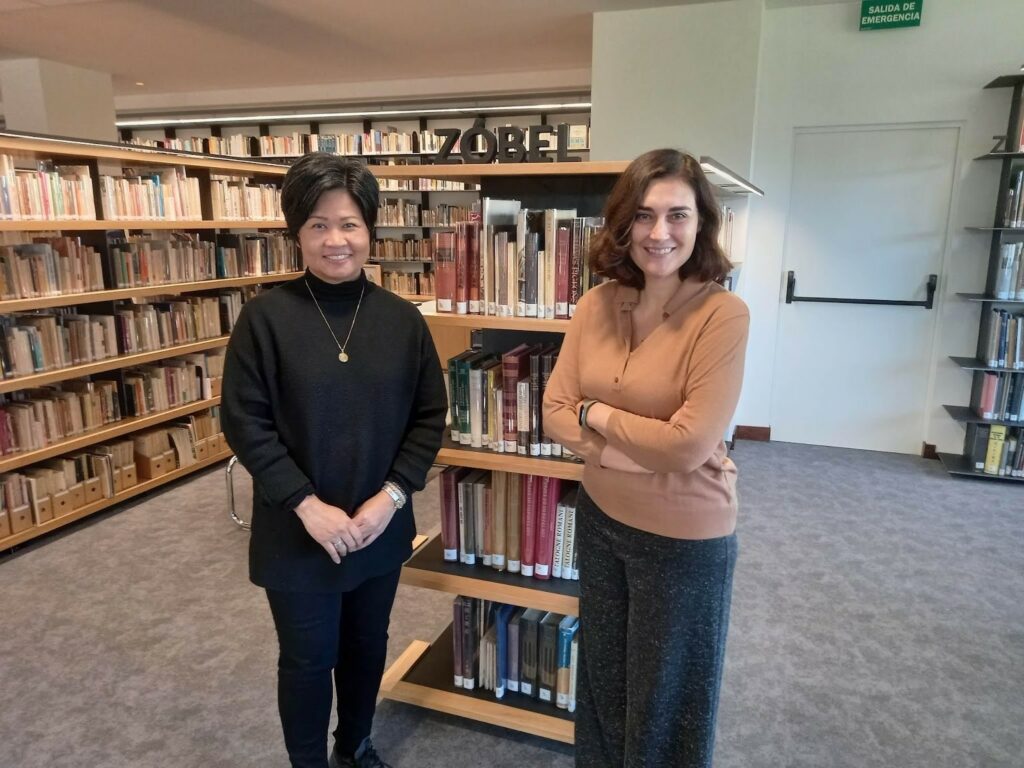
Aprille Tijam with Ines Vallejo, Head of Exhibition Projects at Fundacion Juan March. Behind is the reference section containing all the books donanted by Fernando Zobel to the Fundacion Juan March.
My aim was to go back to the main source of the donation and access resources like the sketchbooks, to know more about this donation and learn further about Zobel’s trips to London; catalogue Zobel’s prints in the FJM collection; and verify who among these Spanish abstract artists, whose works Zobel donated to the BM, are indeed represented in the FJM/Cuenca museum collection. And since 2020, preliminary information and arrangements were efficiently and generously provided by Ines Vallejo, Head of Exhibition Project at the Fundacion Juan March (FJM). Two years of preparations aided in making my research very productive, insightful, and timely.
I first went to the Museo de Arte Abstracto Español as it was the source of the prints and drawings donated to the BM. I travelled by train from Madrid-Atocha to Cuenca Fernando Zobel. It was amazing to finally see for myself the new train station in Cuenca, opened in 2010, and was named after Zobel to commemorate his connection with the city of Cuenca.

There were references about the Museo de Arte Abstracto Español in the 1972 correspondences between Zobel and John Kendall Rowlands (1931-2016), who was then the Assistant Keeper of the Department of Prints and Drawings (1972-1981) when the artworks were donated to the BM, and later became the Keeper (1981-1991).
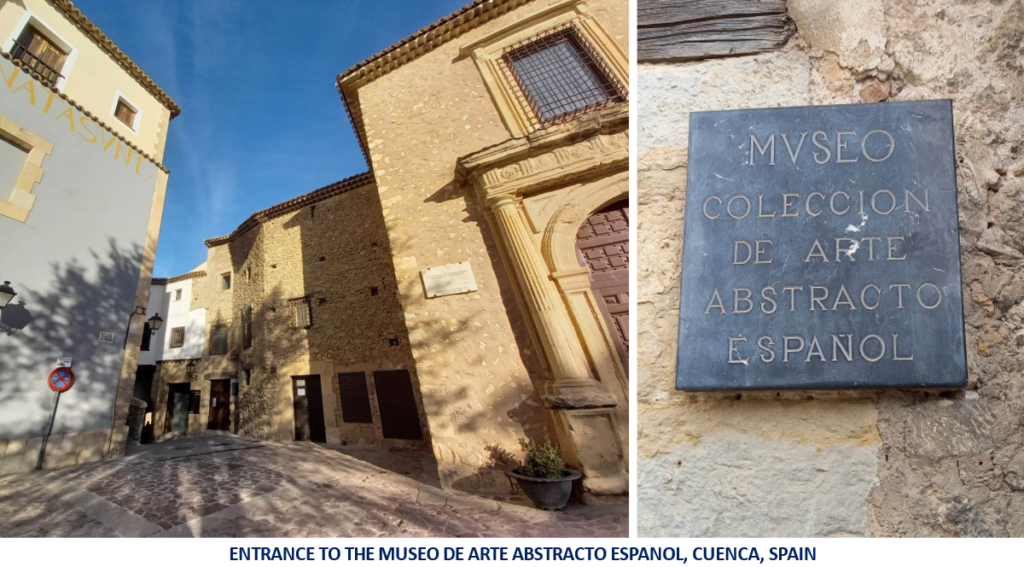

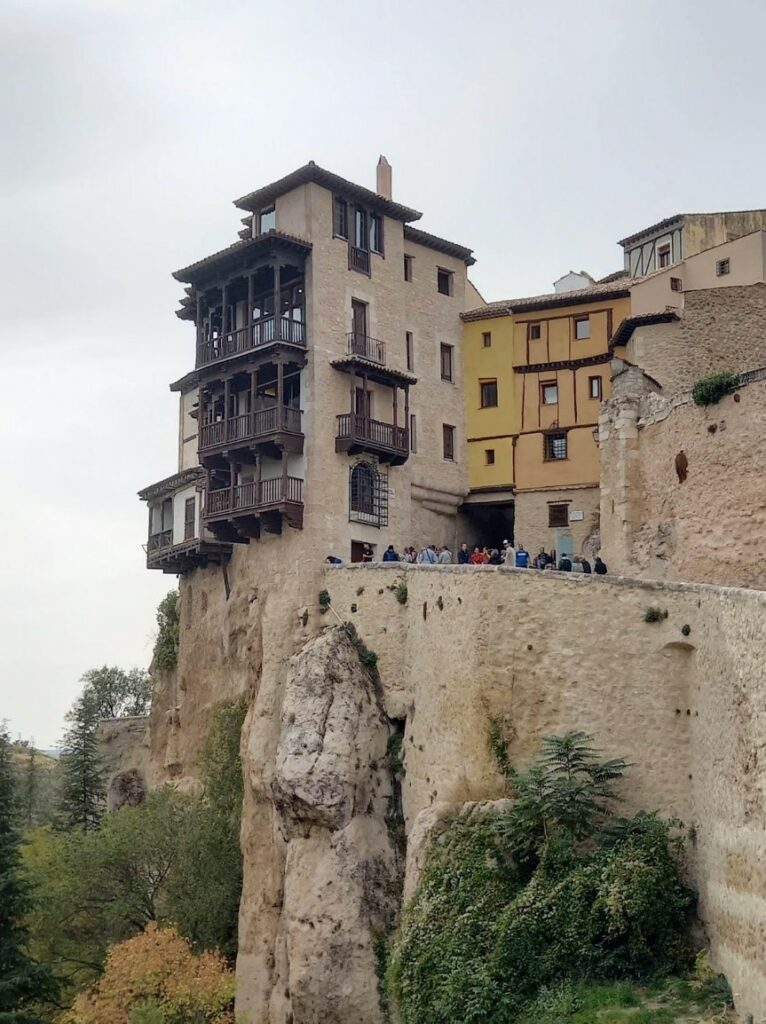
View of the Casas Colgadas (Hanging House) from the bridge where the Museo de Arte Abstracto Espanol is Housed.
I was enthusiastically given an orientation, with so many valuable information by Celina Quintas, the museum’s head, and her colleague, Mercedes Portero—on the history of the museum, the features of the interior of the Casas Colgadas, about Fernando Zobel, the collection, about his prints and what are the available references on Zobel’s prints, the ongoing renovations, and plans for new exhibitions to re-open the newly-renovated museum in early part of 2023. And I found out that the press used by Zobel is now under the care of an art professor at the Universidad de Castilla-La Mancha, Cuenca.
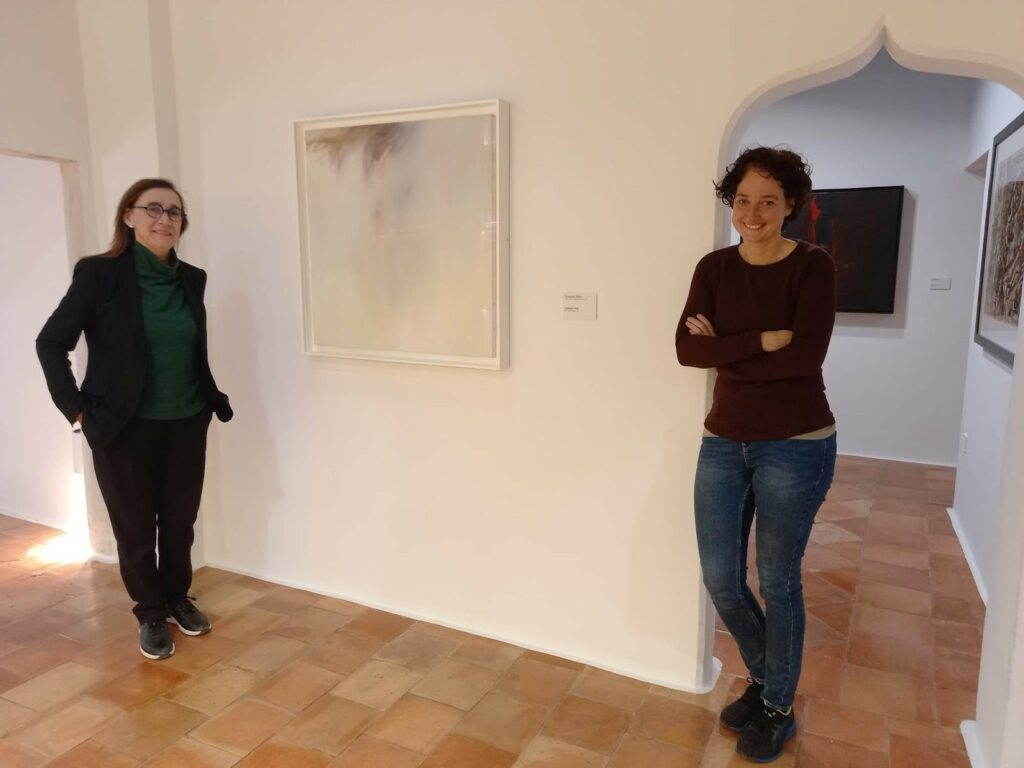
Celina Quintas (left) and Mercedes Portero (Right) at Museum de Arte Abstracto Espanol, Cuenca, with the last painting by Zobel entitled ‘El Puente’ (Oleo y pastel sobre lienzo, 1984).
During this visit, I was lucky to view in full a 17-minute audio visual presentation Las Memorias Una Historia Oral del Museo de Arte Abstracto Español (Memories: An Oral History of the Museum of Spanish Abstract Art) prepared by David Plaza. The presentation was presented beginning June 2022, and will end December 31, 2022. It was very heartwarming to hear anecdotes (in Spanish, with English translations) from the members of the community, to include artists, periodistas (journalists), photographers, and others, as a tribute to Zobel and the role that the museum played in the community since it was established in 1966.
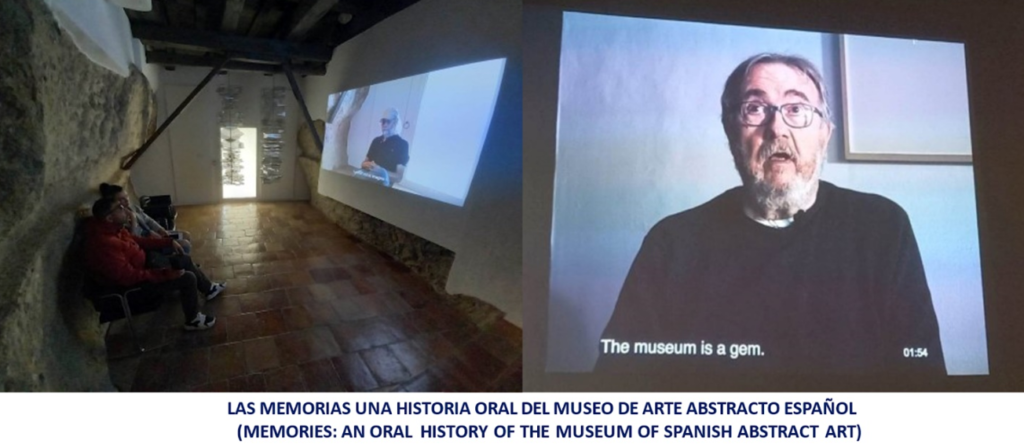
Celina also accompanied me to visit the tomb of Zobel located atop the hill overlooking the majestic view where the famous Jucar river is located down below.
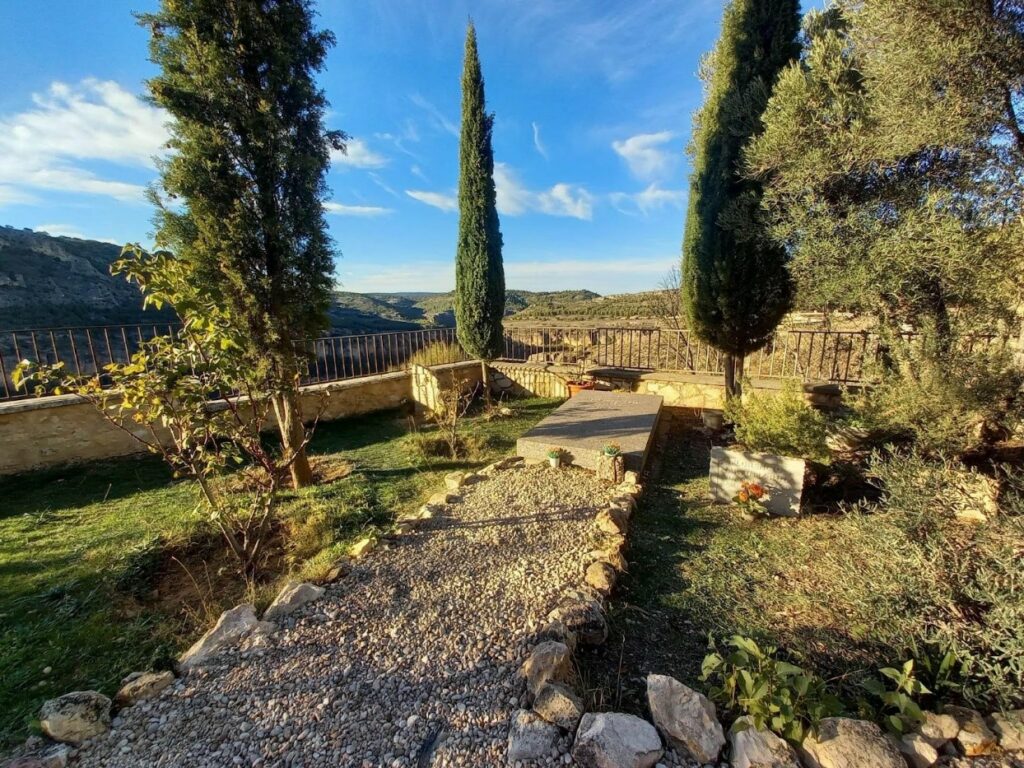
The Ermita Cementerio where Fernando Zobel was laid to rest in 1984.
And I was able to access nine cuadernos (sketchbooks) in Cuenca, going through Zobel’s drawings, notes mostly written in Spanish, photo collages. It was the first time for me to see and hold these much talked about sketchbooks. As of Zobel’s death in 1984, it is said that there are a total of 150 sketchbooks. And Celina helped identify which sketchbooks had entries related to Zobel’s time in London. These I have yet to see as most of these cuadernos related to London are are currently on exhibit at the Museo Nacional del Prado.
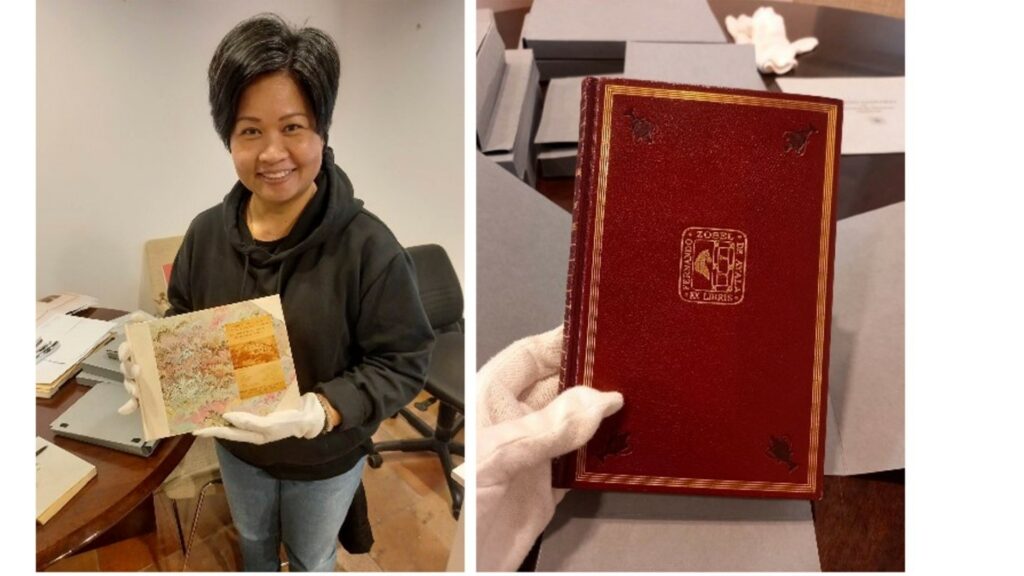
At the Fundacion Juan March in Madrid, I was able to access twelve more cuadernos, giving me more insights into how Zobel documented moments like street scenes, portraits, what people were wearing, landscapes, mementos like programmes of concerts and musical festivals, and more. There were a great number of photographs of friends playing different musical instruments, illustrating his interest in music, that have inspired some of his abstract paintings. Yana Zabiyaka, who has worked on the sketchbooks with FJM as part of the research for the Zobel exhibition at the Museo Nacional del Prado, provided me with copies of transcriptions determining which sketchbooks carry entries on Spanish artists whose works were donated to the BM to include notations on Bonifacio Alfonso, Gonzalo Chillida, Eduardo Chillida, Jose Guerrero, Carmen Laffon, Gerardo Rueda, Antoni Tapies, to name a few. Yana reviewed the first transcription of the sketchbooks, made by María Ángeles Villalba in her doctoral thesis on the artist.
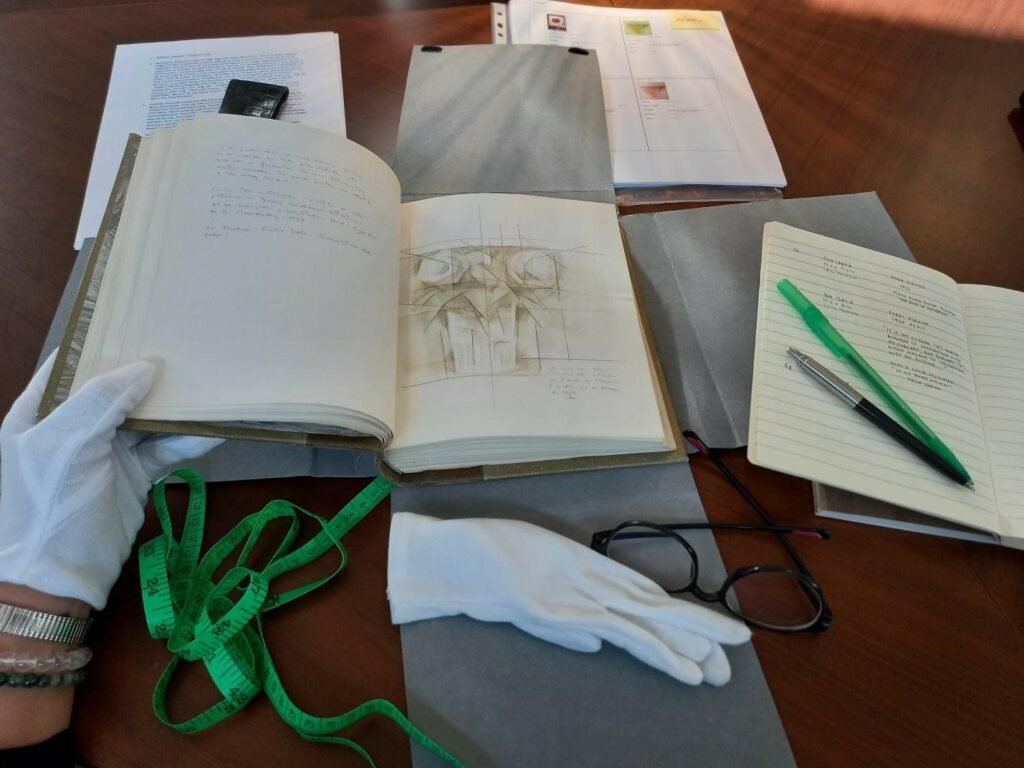
One of the Cuadernos of Fernando Zobel at the Fundacion Juan March.
Ines Vallejo, together with Marta Ramirez Menendez, and Aurora Muñoz Yeste allowed me to study, handle, and catalogue more than 40 prints of different kinds. These formed part of more than 100 prints in their inventory. Some editions were part of the Paisajillo, Mariveles, Icaro, and Homenaje a Teobaldo Boehm series. And FJM has a version of the Veronica print 44/50 (1964), which is currently on exhibit at the Museo Nacional del Prado. The BM has the same print entitled Variacion sobre mia Veronica de Domenico Feti (Variation on the Veil of Veronica by Domenico Feti) 1/50 (1964).
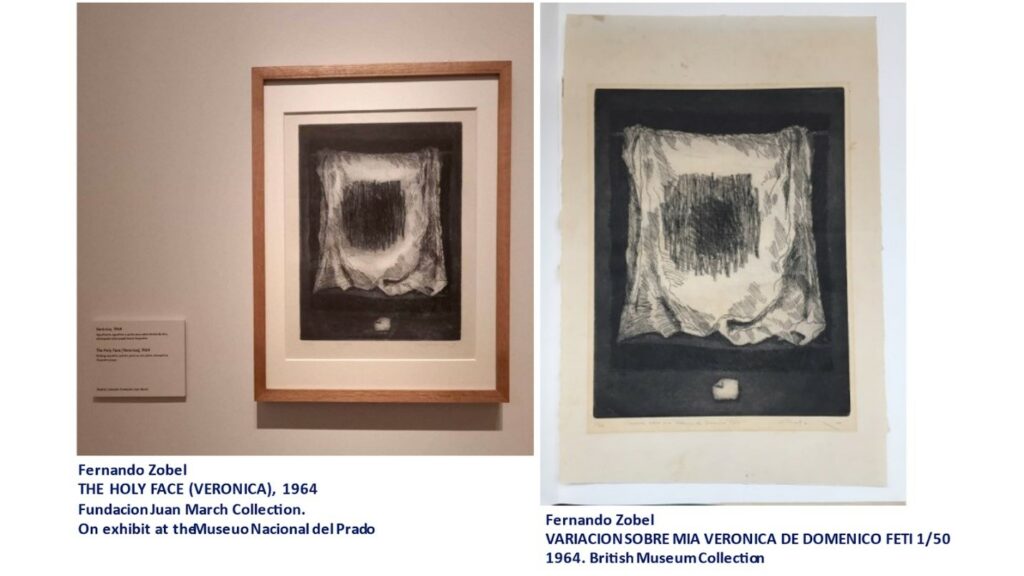
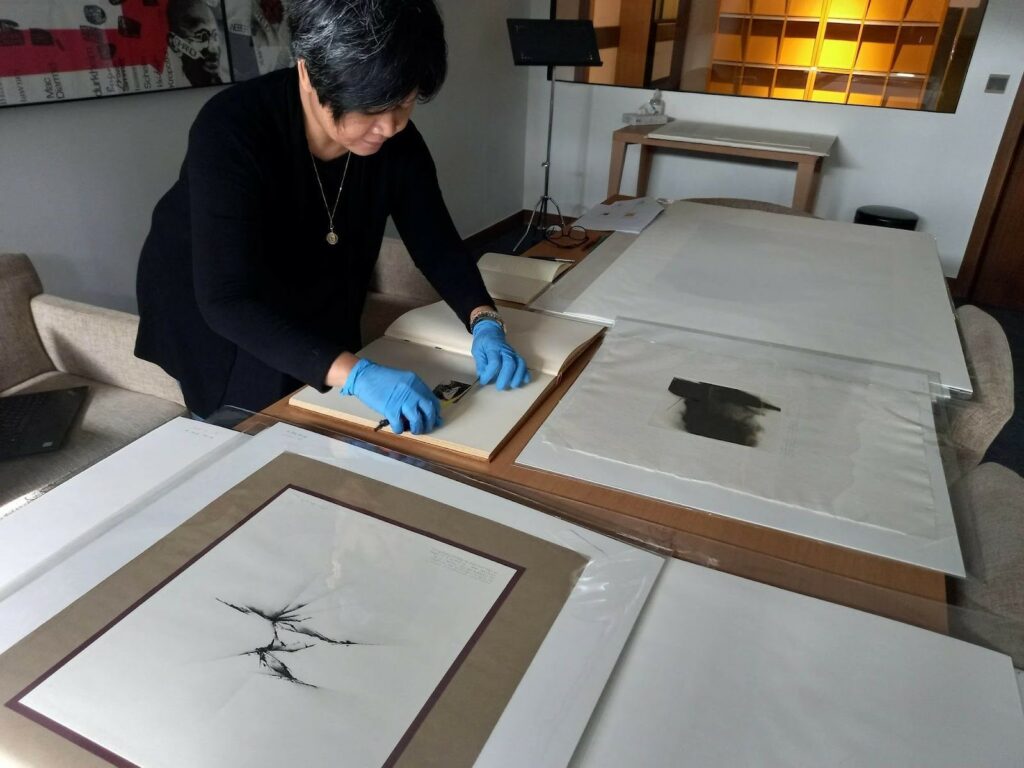
Aprille cataloguing the prints of Fernando Zobel at at Fundacion Juan March in Madrid.
And as part of sharing the information on the donation of Zobel to the British Museum, a copy of my report “Research on Fernando Zobel Collection and Donation to the British Museum” was donated to the Biblioteca of the Fundacion Juan March, through Luis Martinez Uribe, Director of the Biblioteca y Centro de Apoyo a la Investigación. The special publication of this report, with very limited copies, was undertaken by Ayala Knowledge Management.
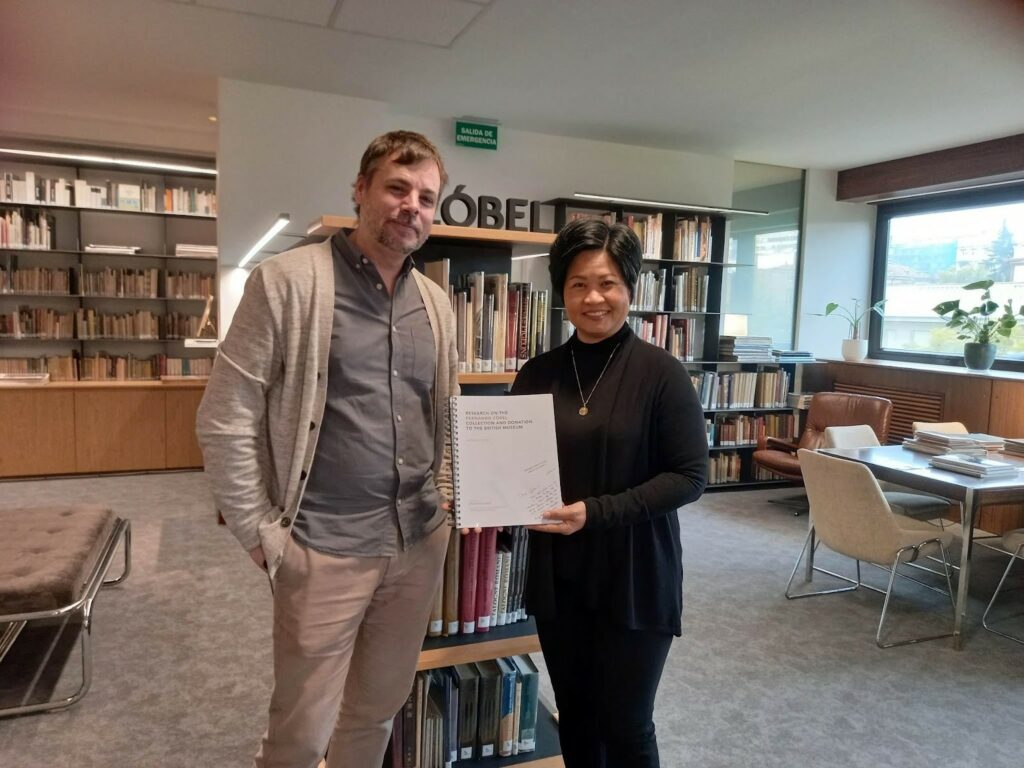
Aprille donated a copy of her report “Research on Fernando Zobel collection and donation to the British Museum” to Luis Martinez Uribe, Director of Biblioteca, Fundacion Juan March.
I am very thankful to the British Museum International Training Programme Research Grant for the realised possibility to continue with phase two of my research on Fernando Zobel prints, and for the vital collaboration provided by Museo Nacional del Prado, Fundacion Juan March, Ayala Museum/Ayala Foundation, Inc., and the heirs of Fernando Zobel.
